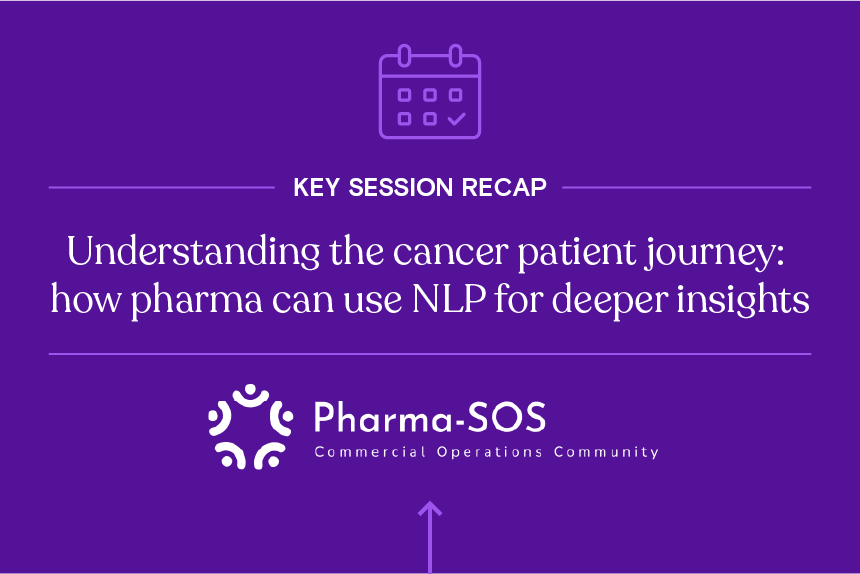How’s your medical affairs team been performing lately? It’s a fairly simple question—you probably already have an answer in mind—but here’s a trickier one: How do you truly measure the impact of your medical affairs efforts?
For most functions in your organization, tracking performance is a matter of identifying key performance indicators (KPIs) and measuring them over time. Quantitative metrics like marketing qualified leads, return on investment, and spending as a percentage of sales can provide clear insights into the performance of commercial or R&D teams. However, gauging and communicating the value of medical affairs often requires a more nuanced, qualitative approach.
So, how do you quantify the unquantifiable? Keep reading to discover why traditional metrics fall short and how you can truly understand the impact your medical affairs team is making.
Why is medical affairs performance so hard to measure?
Unlike commercial teams, medical affairs don't directly drive revenue. Instead, their core mission is to deliver accurate, unbiased scientific information to key opinion leaders (KOLs) and healthcare professionals (HCPs). This often involves sharing safety updates, published research, and addressing inquiries about off-label uses. Through these engagements, medical affairs teams share the science behind their organization’s latest developments and gather valuable insights from external stakeholders to guide organizational strategy.
However, the true value of medical affairs isn’t measured by the frequency of stakeholder meetings or the volume of poster presentations—though these are useful metrics to track. What really matters is how effectively your medical affairs team drives tangible outcomes: how much trust a KOL places in your data following engagement, the impact of insights collected from a KOL, or how a KOL uses information provided during a scientific exchange.
These outcomes aren’t easily captured with quantitative metrics alone, and reporting on a team’s success requires more effort than plugging data into a chart. To tell the full story of medical affairs’ impact, you’ll need qualitative indicators that provide context to your team’s goals and objectives.
Qualitative KPIs add narrative to your quantitative metrics
While quantitative KPIs provide a numerical snapshot of medical science liaison (MSL) performance (e.g., number of KOL interactions, scientific publications supported), qualitative KPIs offer a deeper understanding of the impact and quality of these engagements. When combined, they create a more comprehensive picture of MSL effectiveness in driving value.
For instance, a high number of KOL interactions (quantitative KPI) is meaningful only when coupled with qualitative insights about the nature of those interactions. Were they primarily one-way information dissemination, or did they foster genuine dialogue and knowledge exchange? Do KOLs perceive the MSL as a trusted advisor, or merely as a product representative? Feedback from KOLs on the MSL's scientific expertise, communication skills, and responsiveness can provide crucial context.
Furthermore, qualitative KPIs can illuminate the long-term impact of MSL efforts. For example, tracking the evolution of KOL relationships over time can reveal if the MSL is building strong, collaborative partnerships. Monitoring the depth and breadth of insights gathered from KOLs can assess the MSL's ability to inform strategic decision-making. By delving into the qualitative aspects of MSL-KOL interactions, organizations can gain a nuanced understanding of how these relationships contribute to overall medical affairs goals.
Which qualitative KPIs are best suited to convey the efficacy of your medical affairs team will depend on your organizational goals. Consider what your organization wants to accomplish through medical affairs before deciding which KPIs are right for your team.
KOL source
When your MSL adds a new KOL to their network, the potential value of that KOL can be predicted by their “source”—that is, how they came into the MSL’s network. One KOL referred into the network by another, for instance, may suggest a more valuable medical affairs interaction than a KOL acquired through social media engagement. Consider tracking KOL source alongside MSL network size or growth rate to add qualitative value to quantitative metrics.
Actions taken after engagement (ATAE)
So, your MSL had a great conversation with a KOL. What did the KOL do next? Actions taken after engagement (ATAE) refers to the specific actions or outcomes that follow interactions between MSLs and KOLs. For example, a KOL might share the information exchanged with a colleague. An especially valuable interaction might see a clinician start prescribing a new therapy or recommend the inclusion of a product in clinical guidelines. Tracking actions taken after engagement is a useful way to monitor MSL performance.
Follow-up interactions
While the number or percentage of MSL-KOL interactions leading to follow-up engagements is a quantitative KPI, it serves as a proxy for a more qualitative outcome—the value that a KOL perceives in their interaction with the MSL. A request for more detailed scientific data or additional educational materials after the initial engagement suggests the exchange was valuable to KOLs.
Medical insight impact
Hopefully, you have an idea of how many insights your MSLs are generating during KOL interactions. But how are these insights shaping your organization? Track insights that produce follow-up actions anywhere within your organization. This qualitative metric not only reveals the value of the KOL who provided it but also the communicative performance of your MSL internally.
Scientific exchange
MSLs are the go-to experts when it comes to specific disease states and treatment options in their therapeutic areas. Their contributions to drafting, reviewing, or co-authoring research articles, abstracts, and posters are key indicators of their impact in this area. By looking at the quality of these publications and their presence in high-impact journals and conferences, you can gauge how well MSLs are pushing forward new scientific knowledge, adding valuable context beyond the number of publications or conference presentations.
Research collaborations
When it comes to fostering research collaborations, MSLs play a key role in connecting with academic institutions, study sites, and other research entities. Assess how well MSLs are building and nurturing relationships with academic institutions and research entities and how these connections are driving research forward. The quality and depth of these collaborations offer rich insights into the MSLs’ role in advancing research, complementing the quantitative metrics of project counts and stakeholder engagement.
Medical insight impact
Hopefully, you have an idea of how many insights your MSLs are generating during KOL interactions. But how are these insights shaping your organization? Track insights that produce follow-up actions anywhere within your organization. This qualitative metric not only reveals the value of the KOL who provided it but also the communicative performance of your MSL internally.
These are just a few of the most common qualitative KPIs. Every organization’s needs are unique, and yours may find value in tracking others, such as:
- KOL sphere of influence
- Additional information requests
- Depth of KOL relationships by way of publications, presentations, etc.
- Sentiment analyses of social media
- Real-time opinion surveys
Maximize medical affairs value with healthcare commercial intelligence
If your medical affairs team spends too much time searching for KOL or HCP data, contact information, or clinical activity across disconnected sources, they’re not performing at their full potential. The right healthcare commercial intelligence brings together all the data, analytics, and expertise your medical affairs team needs into one platform, allowing you to identify and engage with KOLs who can drive your organization forward. Ready to explore these insights for yourself? Book a demo with Definitive Healthcare today.





